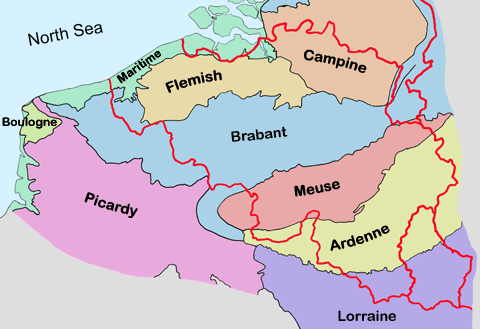
Study area - The Ardenne district
The Ardenne district (Ard.) is mainly characterized by several narrow or broadly widened valleys, which cut through a massif of markedly siliceous rocks, dating back to the Cambrian, Ordovician and lower Devonian, and whose altitude fluctuates between 250 and 694 m (highest point, in the most oriental part). The general landscape of those valleys is composed primarily of forests and the southern part (from Bouillon to the Anlier forest, together with the neighbouring areas of Chiny and Herbeumont) still hosts habitats that can be considered well-preserved. Poor air quality and modern techniques of forestry management admittedly jeopardize the future of the most fragile species but, at the scale of NW Europe, the lichen flora of the Ardenne district can be considered of prime importance, for both epiphytic and saxicolous species. Semi-natural habitats, especially ericaceous heathlands, are now almost all disappeared but their lichen flora has found refuge in habitats of substitution such as disused quarries, particularly near Vielsalm. The flora of the most occidental parts of the massif shows strong atlantic traits while the oriental parts, higher in elevation, seem to shelter more montane species. Finally, the flora in the valleys of the SE parts, especially in the Oesling in Luxembourg, is more continental.